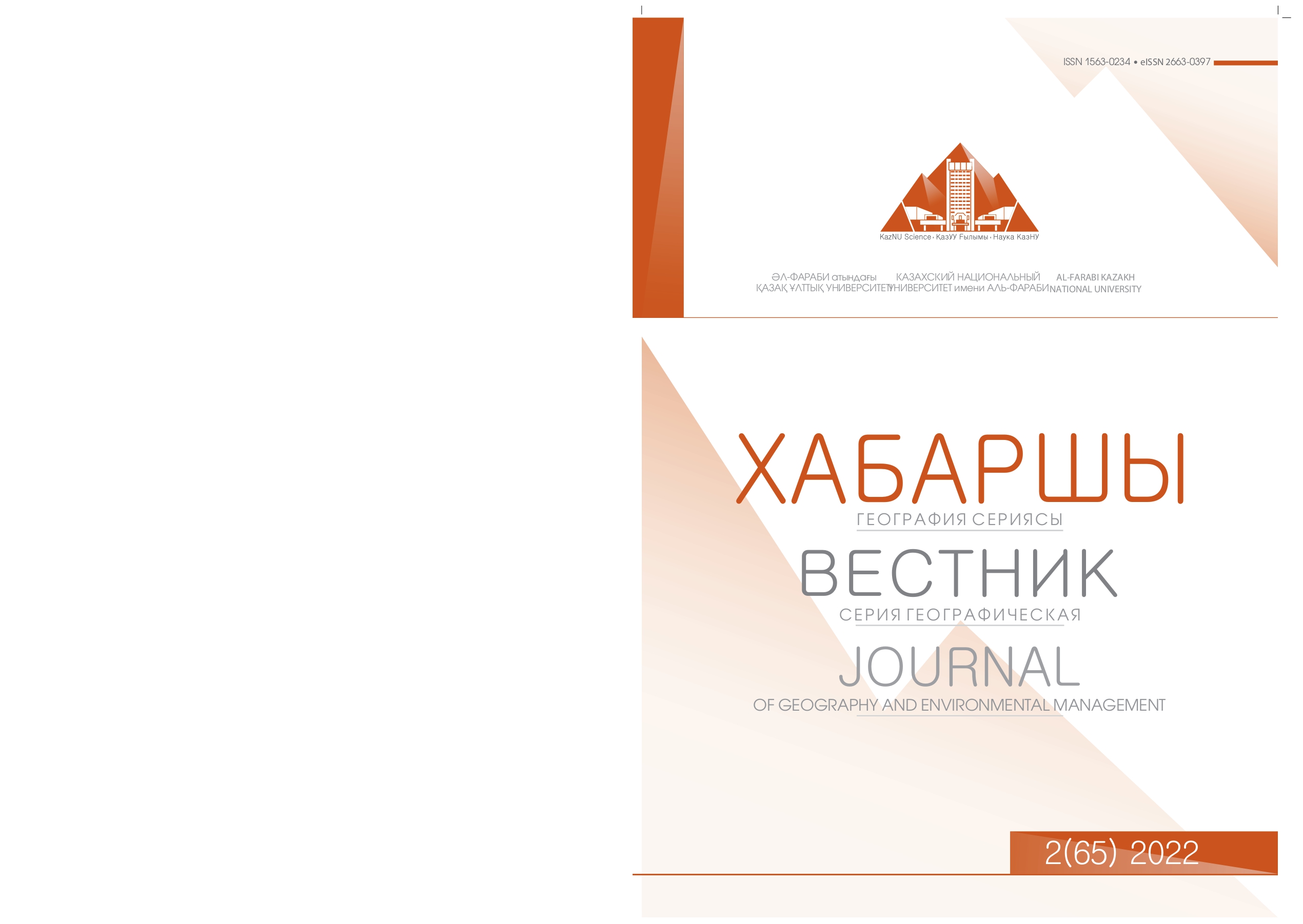Assessment of wildfire hazard on the territory of Kazakhstan using remote sensing data
DOI:
https://doi.org/10.26577/JGEM.2022.v65.i2.03Keywords:
remote sensing, GIS, space monitoring, fire hazard mapAbstract
Kazakhstan ranks 9th in terms of land area in the world, however, most of the territory is in the arid zone, which causes a high exposure to the wildfire risk. According to the Ministry of Emergency Situations, more than 14 thousand fires annually affect forest, steppe and rural areas, which is almost 78% of all fires in the country. This work is aimed at assessing the territory of Kazakhstan in terms of the degree of fire danger using methods and means of remote sensing, which is relevant today. The purpose of this work is to create a fire hazard forecast map that allows you to determine the degree of fire hazard of territories based on remote sensing satellite data. The works of foreign researchers who have direct experience in research and assessment of the degree of fire danger, based on the use of satellite information, are considered. To determine the likelihood of a fire risk, we studied the natural conditions and their impact on the possible spread of a fire, and evaluated 11 types of initial data in the Karaganda region. Based on the experience of the authors, the input data are arranged into the following groups: fuel, topography, climate, and fire statistics. Economic efficiency, and the significance of the results of this work, can serve to reduce socio-economic losses. Similarly, it is possible to significantly speed up the notification of local fire services, pre-evaluate the possible threat of various fires and reduce the time to eliminate them.



